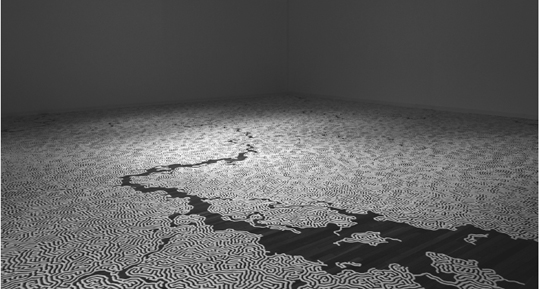In a vast room with white walls and wooden floors, a lone man crouches in the corner holding a spouted container that releases tiny white crystals onto the floor in a carefully controlled flow. Making sure not to disturb the meticulously crafted lines around him, he works steadily and with great resolve. Onlookers watch in silent awe as he adds one line after another to an intricate and flawless maze that spans the entire breadth of the room. Like drawings made in the sand, the work that unfolds is a painstaking exercise in the ephemeral. After all, this particular work of art is made of salt, and come April, all of it will be swept away.
The piece in question is "Labyrinth" by Motoi Yamamoto, an installation that is part of the "Neo-Ornamentalism" exhibition now showing at the Museum of Contemporary Art Tokyo (MOT). Every year since 1999, the museum has selected a theme that reflects contemporary society to hold an "MOT Annual" — a group exhibition designed to introduce young contemporary Japanese artists to the world. This year, the show took "ornamentation" as its 10th-anniversary theme.
For most, the term ornamentation has a direct correlation to the decorative arts. Perhaps it brings to mind pottery with an elaborate surface design, or the hand-carved finishing touches on wooden furniture. Unfortunately, with a caste system in the art world that places ornament and craft at the bottom of the creators' food chain, most artists avoid labels like "craft" and "decorative art" at all costs.



















With your current subscription plan you can comment on stories. However, before writing your first comment, please create a display name in the Profile section of your subscriber account page.